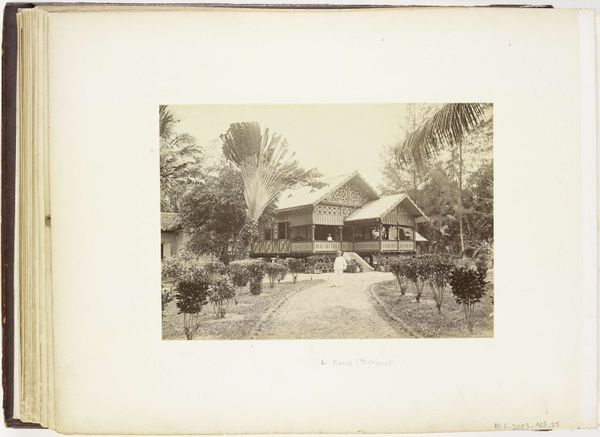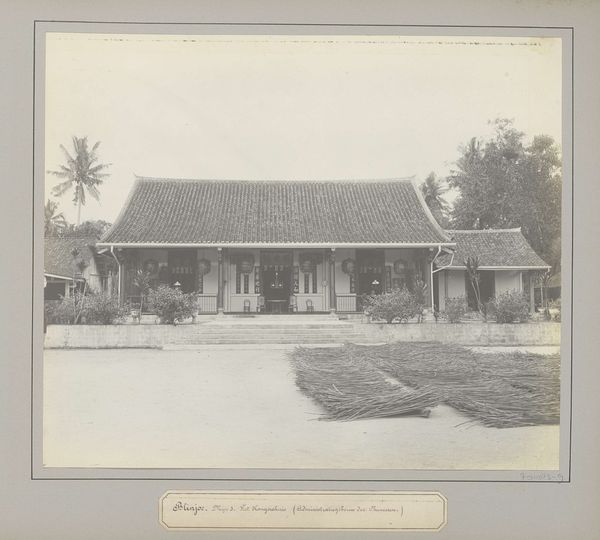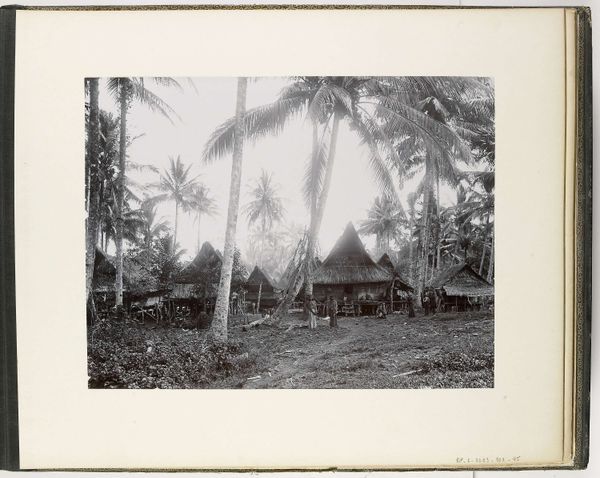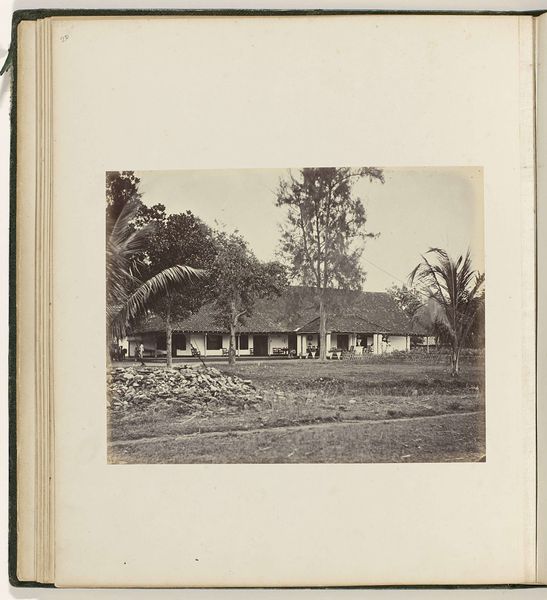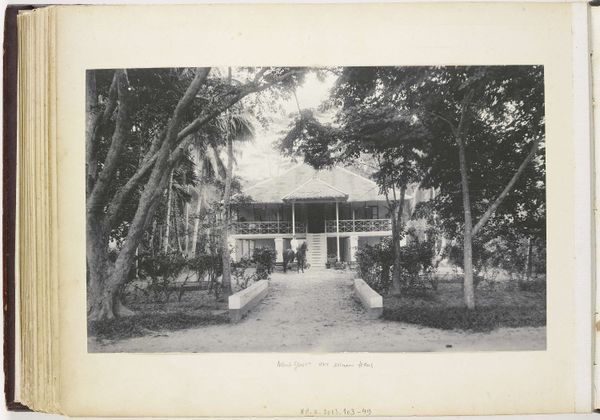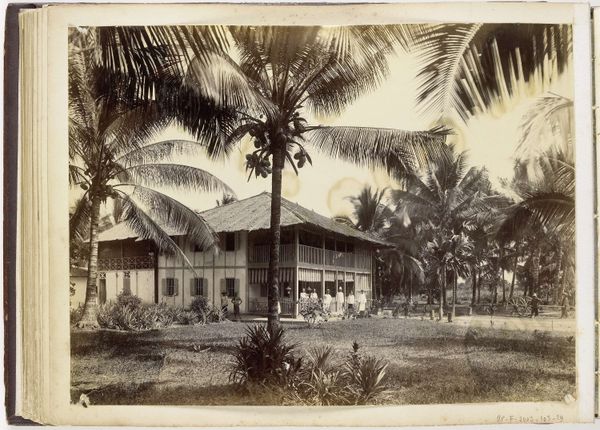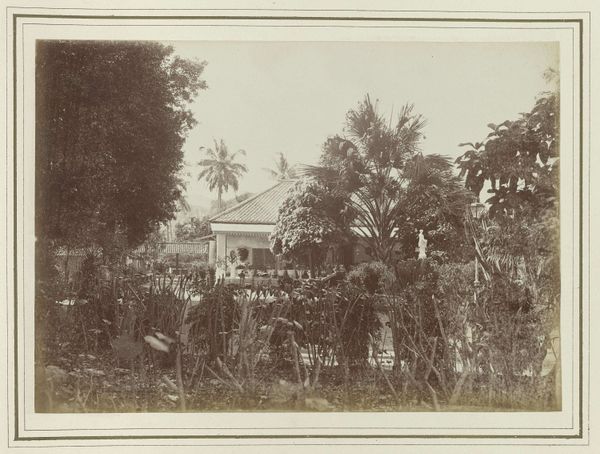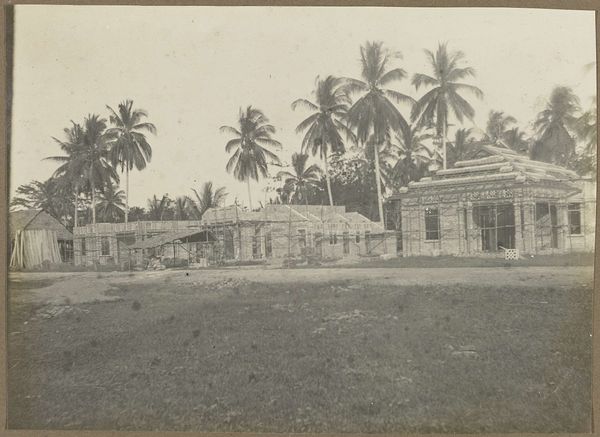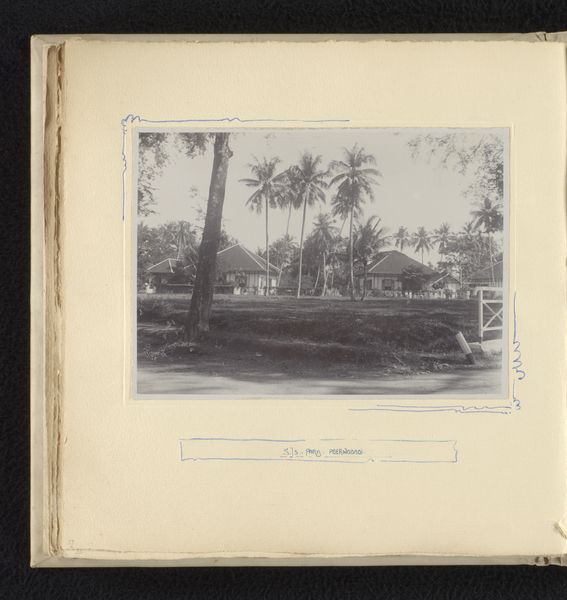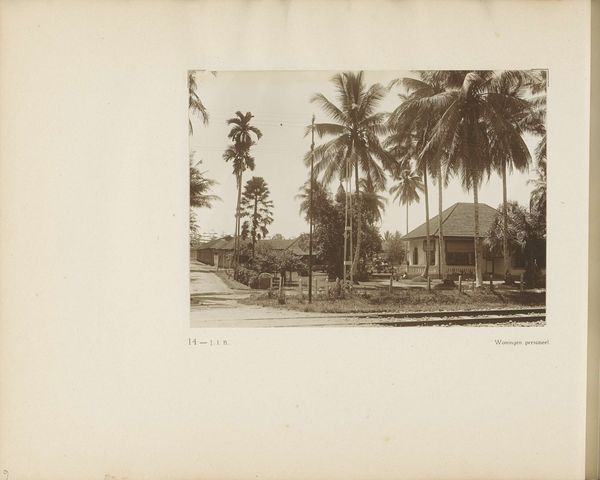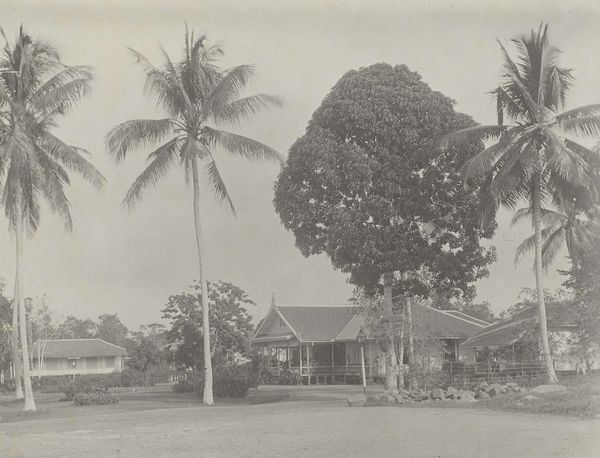
Het huis en atelier van de fotograaf H. Ernst, Langkat Sumatra c. 1890 - 1900
0:00
0:00
heinrichernstco
Rijksmuseum
photography, albumen-print
#
landscape
#
indigenism
#
photography
#
albumen-print
Dimensions: height 143 mm, width 203 mm
Copyright: Rijks Museum: Open Domain
Curator: The albumen print before us, titled "Het huis en atelier van de fotograaf H. Ernst, Langkat Sumatra," was produced by Heinrich Ernst & Co sometime between 1890 and 1900. Editor: It feels like stepping back into a colonial dream. The light is diffuse, almost hazy, creating a very calm atmosphere that is so deceptive. Curator: Precisely. Let’s consider the historical context. This photograph, now residing in the Rijksmuseum, represents a very specific, curated image of colonial life in Sumatra. Editor: Absolutely. We must acknowledge the power dynamics embedded within this seemingly benign image. Whose gaze is centered? What narratives are amplified, and which are silenced? Curator: Indeed. The very act of documenting, especially within a colonial framework, is an act of asserting control. The perfectly manicured landscape, the building itself - it all speaks to the imposition of Western ideals onto the local environment. Editor: Look at the figures on the veranda. They're positioned as observers, almost like props in a staged scene. What were the working conditions and who worked there, and whose stories were systematically erased in these portrayals of the artist’s workspace and residence? The photograph aestheticizes power. Curator: The choice of albumen print also bears noting. The warm sepia tones lend the scene a nostalgic, romantic quality. Editor: But this romance is inherently problematic, is it not? It masks the often brutal realities of colonial exploitation and violence. That softness flattens all into uniformity—the very antithesis of actual intercultural understanding or sensitivity. Curator: It’s a testament to photography's role in shaping public perception. Here, it constructs an image of a well-ordered, productive colonial enterprise. This kind of imagery was, in essence, the marketing of colonialism back home. Editor: So, it encourages a critical perspective, not just as a snapshot of the past, but as a potent symbol of cultural and political power, whose influence resonates today. Thank you! Curator: My pleasure. Analyzing the intersections of representation, power, and history gives rise to vital decolonizing methodologies when interpreting visual materials like this one.
Comments
No comments
Be the first to comment and join the conversation on the ultimate creative platform.
